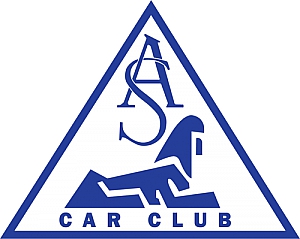The Armstrong Siddeley Marque
Armstrong Siddeley Motors Limited was formed in 1919 with the amalgamation of Sir W G Armstrong Whitworth and Company and the Siddeley Deasy Motor Car Co. Ltd. The first car to carry the Armstrong Siddeley name was the 30HP model which commenced production in 1919 and introduced the sloping V radiator and sphinx mascot which were to become symbols of the marque. A journalist once described an early Siddeley car as being ‚Äúas silent and inscrutable as the Sphinx‚ÄĚ. Colonel J D Siddeley was so taken with this description that, for his trade mark, he commissioned an artist to make drawings of the Sphinx at the base of Cleopatras Needle on the Thames Embankment in London.Armstrong Siddeley Motors Limited produced a wide range of cars in the 1920s and 30s, from small 12HP family vehicles to the magnificent 5 litre Siddeley Special. Car production was on a small scale numbering between one and two thousand vehicles per year, with the peak surprisingly in 1932 when the modestly priced small cars helped carry the Company through the Depression.
 |
 |
In 1928, Armstrong Siddeley introduced the preselector semi-automatic gearbox which came to be associated with most models of the marque.
Following the Second World War, production resumed with the first postwar all new British car, having independent front suspension and advanced body design. Design must have been progressing on the back burner during the war as the new models were announced on 11 May 1945, just three days after the end of the war in Europe. The first cars did not come off the production line, however, until 1946. These 16HP two litre cars were named after famous wartime aircraft built by the group, the Hurricane, Lancaster and Typhoon. The cars were updated in 1949 with the introduction of an improved 2.3 litre 18HP engine and the replacement of the Typhoon sports saloon with the Whitley saloon. Production of these cars continued through to 1954, with the exception of the Mulliner bodied Lancaster which ceased in 1952.
Armstrong Siddeley also produced two commercial versions of the 18HP model; a utility coupe and a station coupe, the latter having a short tray and an occasional bench seat behind the front seat in its extended cab. More than half of these were exported to Australia where a number of fine restored examples are cherished by their owners. Extended chassis limousines and cabriolets were also produced. Perhaps the most interesting of the immediate postwar models were the two-door Hurricane drophead coupe and the two door Typhoon sports saloon, of which relatively few survive.
 |
 |
An entirely new model, the 3.4 litre Sapphire saloon, was introduced late in 1952 for sale in 1953. The engine was of advanced design having hemispherical combustion chambers and developing 120bhp in the first instance, increasing to 125bhp with early development and to 150bhp with the optional twin carburettors. The twin carburettor Sapphire was capable of a genuine 100mph. The Sapphire was introduced with a choice of preselector and synchromesh gearboxes. It became available in an automatic version (Rolls Royce four speed) with the introduction of the Mark II in 1954.
 |
 |
In 1956, the smaller 234 and 236 Sapphire models were introduced as a replacement for the discontinued 16/18HP cars. The 234 Sapphire had an advanced 4 cylinder version of the Sapphire engine which developed 120bhp and gave the car outstanding performance characteristics. The 236 Sapphire had a reworked version of the 18HP engine developing 85bhp. A 4 speed synchromesh gearbox was standard on both models with the option of a Laycock de Normanville overdrive. Many 236 Sapphires were fitted with Manumatic clutches. Sadly, these cars were not popular, due mainly to their unusual (for the time) body styling, and production ceased in 1958.
 |
 |
The Sapphire was replaced by the opulent Star Sapphire in 1958. The Star was one of the first British production saloons to have front wheel disc brakes fitted. Alas, the Star Sapphire was the last model ever produced by Armstrong Siddeley and the last Star Sapphire left the works in July 1960.
Related pages


